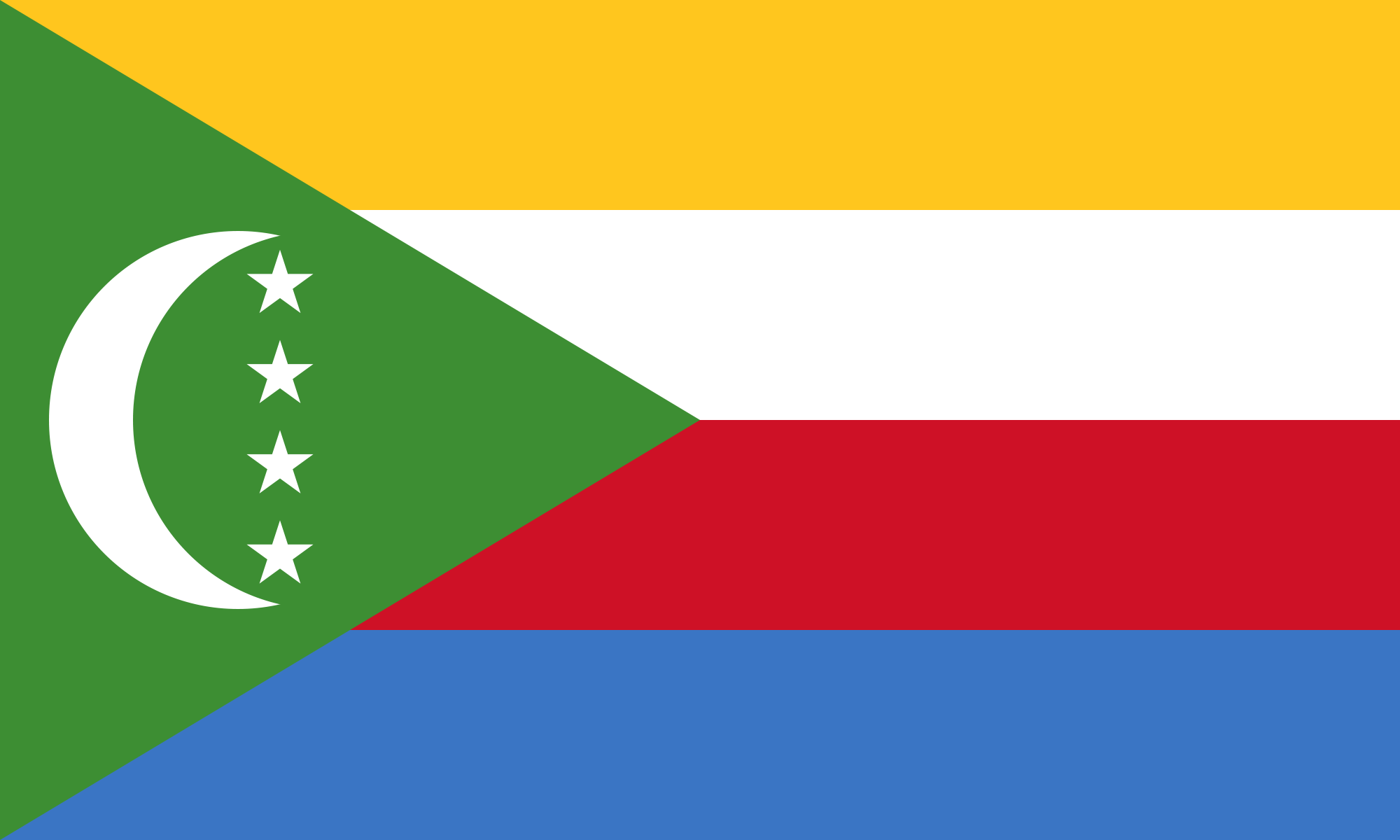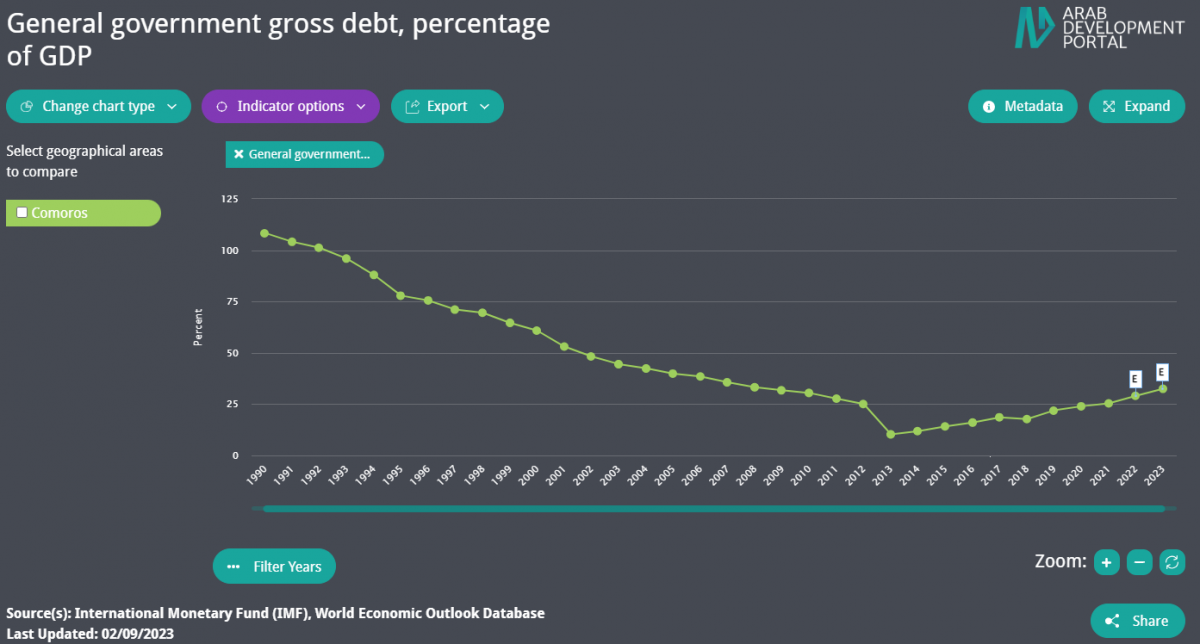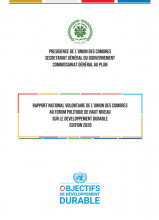 Comoros
Comoros
Comoros is the least populous country in the Arab region, with a population of 829,000 in 2022. Comorian population is considered to be young with 56.6 percent of residents under the age of 24. The country registers a high fertility rate of 3.91 births per woman[2] compared to the regional average of 3.14 births per woman.[1] Growing at an average annual rate of 1.8 percent, 70.1 percent of the Comorian population live in rural areas in 2022.[6] Ranking 156th out of 191 countries, Comoros was categorized as one of the medium human development countries in 2021, with a life expectancy at birth of 63.7 years in 2022, far below the regional average of 70.8 years. The average mean years of schooling is 5.1 years, compared to the regional average of 8 years.[3] Comoros continues to have a high maternal mortality of 217 deaths per 100,000 live births and a high adolescent birth rate of 58.17 births per 1,000 women ages 15-19.[1]
Comoros is considered a low-income country with an estimated GDP (PPP current prices) of $3.4 billion in 2022, the lowest among the Arab countries,[4] and a Gross National Income (GNI) per capita (PPP current prices) at $3850 in 2022.[1] Economic developments were challenging in Comoros during 2019, notably after a cyclone struck the country in April 2019. Driven by the negative implications of the cyclone, GDP growth declined from 3.6 percent in 2018 to -0.19 percent in 2020 then it increased to reach 2.59 percent in 2022, while the inflation rate increased from 7.07 percent in 2021 and registered 20.6 percent in 2022. [4]
In 2022, the labour force participation rate reached 44.16 percent. This rate has increased for males, from 52 percent to 55 percent over the 2000-2022 period, while the rate among females has been slightly increasing, reaching 33.25 percent in 2022, up from 32.12 percent in 2000. The unemployment rate increased also over the same period from 4.6 percent in 2000 to 8.8 in 2022, registering 7.37 percent for men, compared to 11.2 percent for women, but under-employment is generally the norm in Comoros. Over the same period, the youth unemployment rate reached 20.27 percent in 2022. The gender gap in youth unemployment was low, with 20.47 percent and 20 percent of youth unemployment for men and women, respectively.[5]
Poverty remains one of the most crucial challenges facing Comoros. According to the latest Human Development Report in 2021, 42.4 percent of the population lives below the income poverty line, and 22.3 percent are vulnerable to multidimensional poverty.[3]
Comorian children still face several challenges concerning health and nutrition. Comoros has the fifth highest under-five child mortality rate in the Arab region at 49.7 per 1,000 births.[1]
This overview was last updated in November 2023. Priority is given to the latest available official data published by national statistical offices and/ or public institutions.
Sources:
[1] The World Bank. 2023. World Development Indicators. [ONLINE] Available at: https://databank.worldbank.org/data/source/world-development-indicators [Accessed 23 August 2023].
[2] Population Division of the Department of Economic and Social Affairs of the United Nations Secretariat. 2023. World Population Prospects. [ONLINE] Available at: https://population.un.org/wpp/ [Accessed 23 October 2023].
[3] United Nations Development Programme (UNDP). 2023. Human Development Index. [ONLINE] Available at: https://hdr.undp.org/data-center/documentation-and-downloads [Accessed 25 October 2023].
[4] International Monetary Fund. 2023. World Economic Outlook. [ONLINE] Available at: https://www.imf.org/en/Publications/SPROLLs/world-economic-outlook-databases#sort=%40imfdate%20descending [Accessed 24 October 2023].
[5] International Labor Organization. 2023. ILO stat [ONLINE] Available at: https://ilostat.ilo.org/ [Accessed 23 September 2023].
[6] Population Division of the Department of Economic and Social Affairs of the United Nations Secretariat. 2023. World Urbanization Prospects. [ONLINE] Available at: https://population.un.org/wup/ [Accessed 23 October 2023].
Data Highlights
-
In Comoros, since 1990, the general government gross debt, as a percent of GDP has continued to decline over two decades, registering its lowest level in 2013 at 10.28 percent, after which it rose continuously registering 32.47 percent in 2023, according to the International Monetary Fund estimates.

